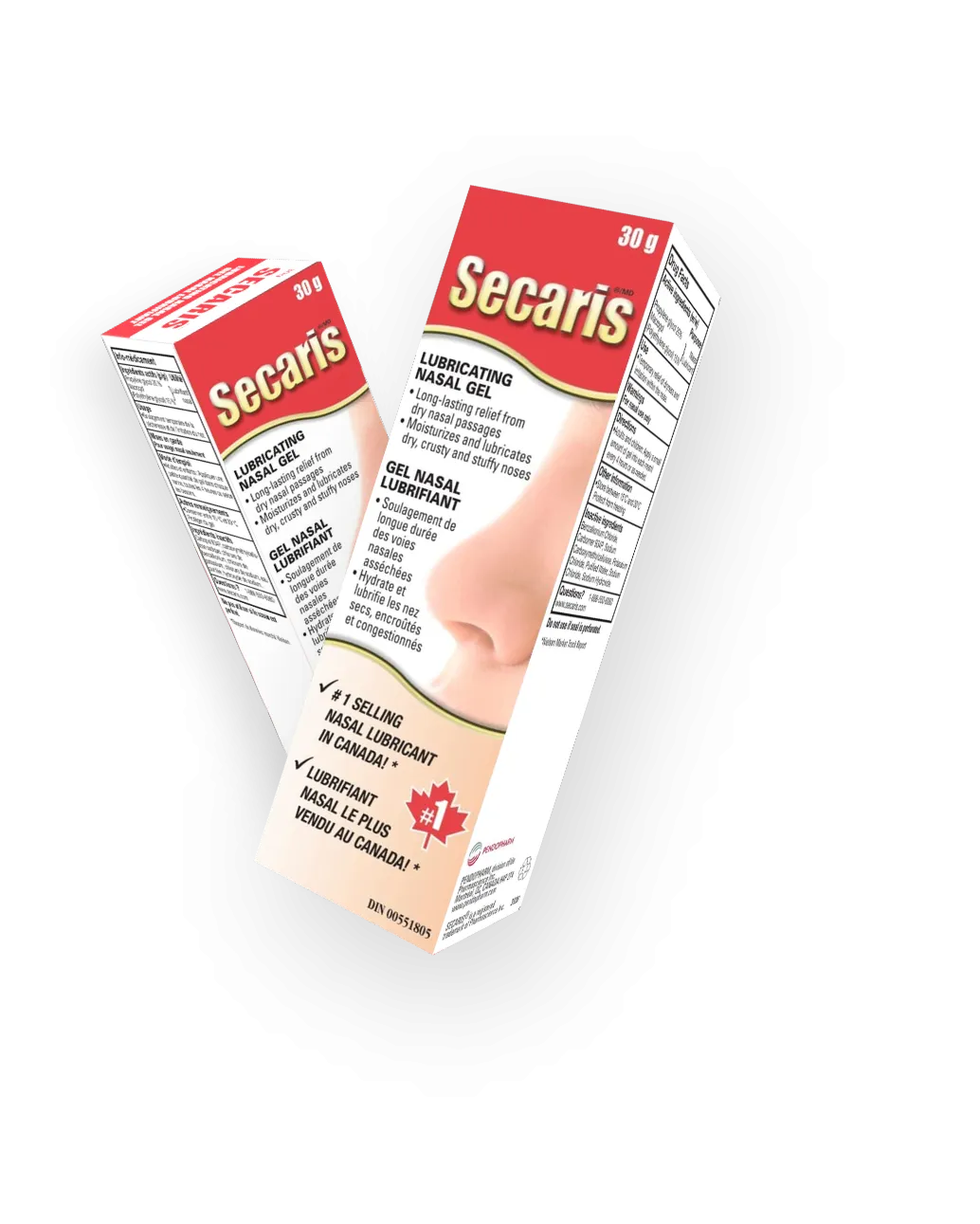A dry or crusty nose is not operating as per normal – anyone who’s had one will testify to that. To understand what causes it, it’s best to start with look at what a healthy nose is supposed to be doing.
Our noses are part of several important bodily functions[1], including:
- Allowing air to enter the body
- Filtering and cleaning air to remove particles and allergens
- Providing a sense of smell
- Warming and moistening air so it can move comfortably into our respiratory system
- Contributing to how we sound when we speak
The anatomy of the nose includes the bone, the hair and cilia, the outer (lateral) walls, the cavities, nerve cells, nostrils, septum, and the sinuses.
The parts we must focus on more to understand dry or crusty noses are the nasal cavities and the sinuses.
First, the Nasal Cavities. They are lined with mucous membranes, which produce mucus – a sticky, viscous fluid lubricates the cavities and traps any invading germs, dust, or irritants.[2]
And then, the Sinuses, of which we have four pairs. These air-filled pockets are connected to our nasal cavities and also help produce the mucus that keeps our noses moist.[3]
Now that we are on the same page regarding the normal functioning of the nose, we can look at why our noses sometimes get dry and crusty, and what causes the normal operations of the nose to be suspended.
In simple terms - nasal dryness is caused by the drying up of the mucus or a thickening of its consistency due to lack of humidity in the air. When mucus turns into a thick, crusty mass it obstructs air passage in the nose and causes discomfort.[4]
A lack of mucus production and the supsequent dry and crusty noses can be caused by many diverse reasons, which include:
- Cold and allergies
- Decreased humidity in the environment
- Excessive use of air conditioning or indoor heating
- Medications such as antihistamines, anticholinergics, and decongestants
- Overuse of decongestant nasal sprays
- Heated room or hot environment
- Long-distance flights[5]
Which finally brings us to, what to do in case you or a loved one is facing the discomfort that comes with a dry and crusty nose?
In this case, you should consider Secaris®.
Secaris® is a lubricating nasal gel used for the temporary relief of dry and crusty noses and is #1 selling Nasal Lubricant in Canada [6]. Secaris® moisturizes dry, crusty, and stuffy noses, and has a long-lasting lubricating effect. What’s more, Secaris® can provide relief to both adults and children with just the application of a small amount of gel into each nostril! [7]
This product may not be right for you. Please read and follow the label before use for a list of contraindications, warnings, precautions, and adverse reactions.
Secaris® is a registered trademark of Norwell Consumer Healthcare Inc.
References:
- Cleveland Clinic:
https://my.clevelandclinic.org/health/body/21778-nose - Steven Kmucha, MD, Otolaryngologist - How to Relieve Nasal Dryness at Home:
https://www.emedihealth.com/ent/nose/dry-nose - Cleveland Clinic:
https://my.clevelandclinic.org/health/body/21778-nose - Why Is the Inside of My Nose So Dry? Medical Author: Divya Jacob, Pharm. D. Medical Reviewer: Shaziya Allarakha, MD ,
a. https://www.medicinenet.com/why_is_the_inside_of_my_nose_so_dry/article.htm
b. https://www.webmd.com/cold-and-flu/cold-medicines-adults
c. https://www.sciencedirect.com/topics/medicine-and-dentistry/dry-nose
d. https://www.ncbi.nlm.nih.gov/pmc/articles/PMC4005055/ - Same as 4
- Source: IQVIA Market Track Report
- Source: Secaris® Box and Label Insert





